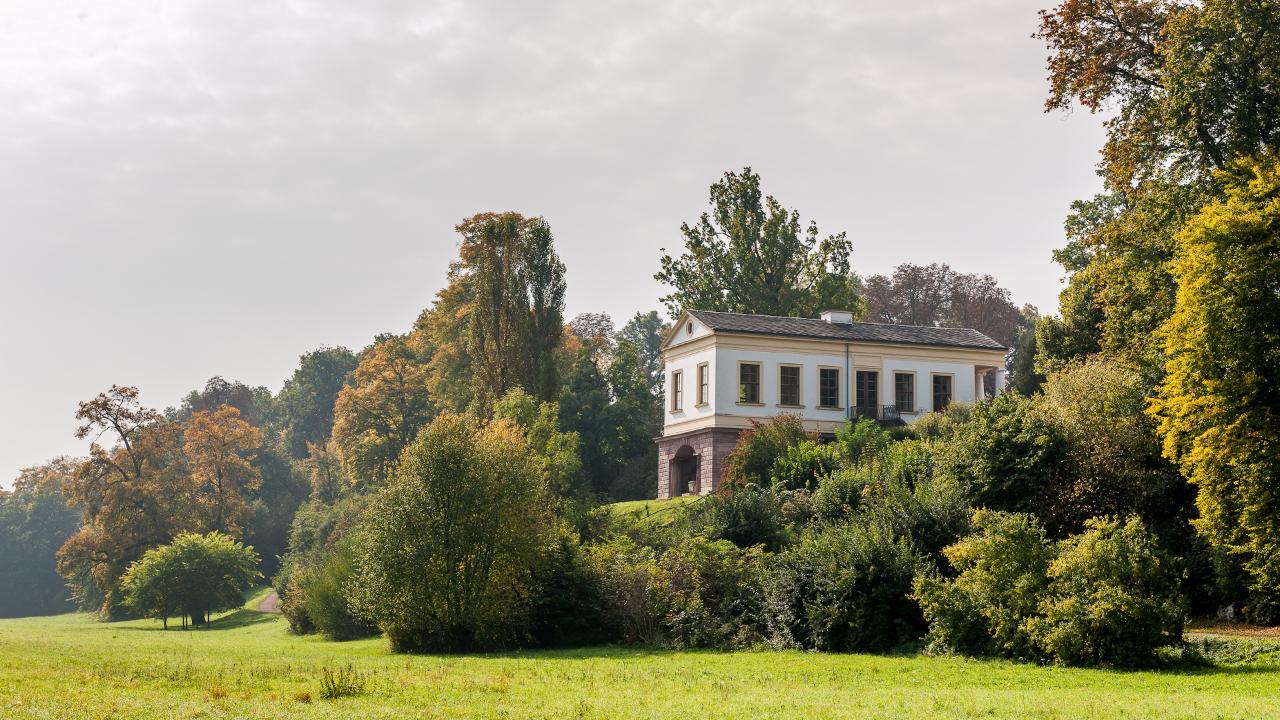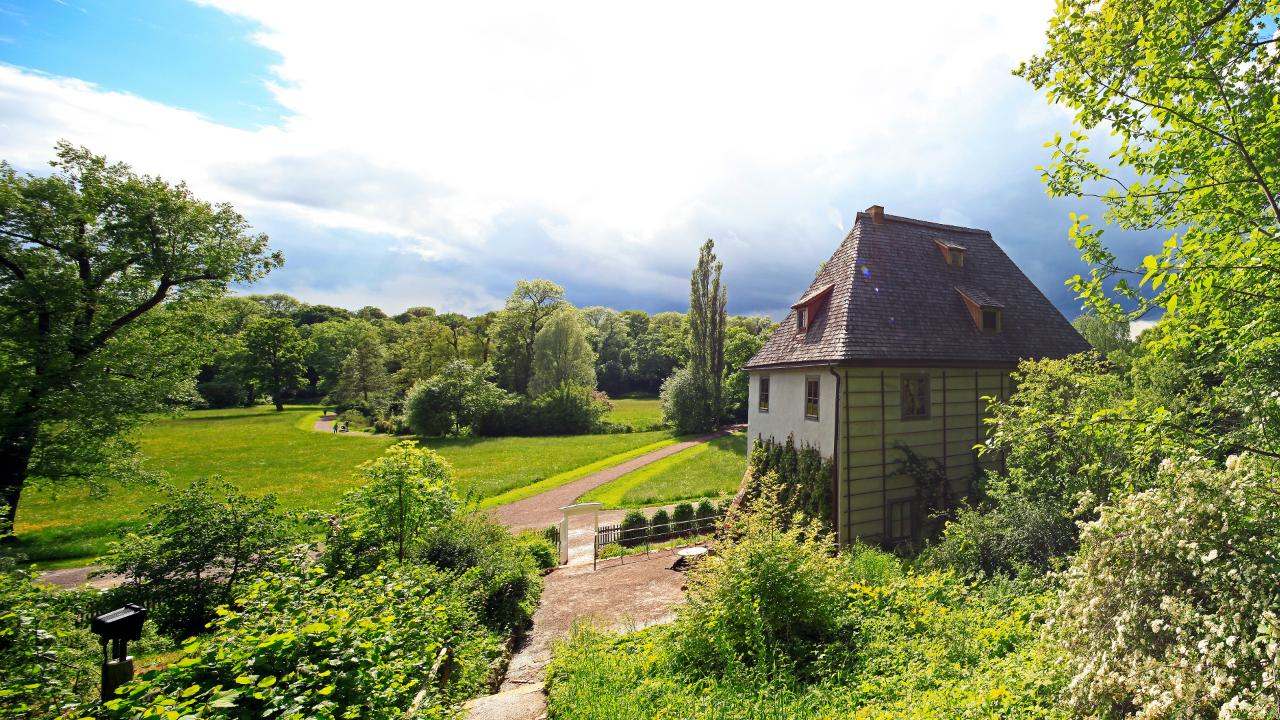Visit the state capital Erfurt and go on a virtual discovery tour through Thuringia.
A sensitive heart
An interview with Dr Reinhard Laube, Director of the Duchess Anna Amalia Library in Weimar
Goethe, who was a patron of the Anna Amalia Library for 35 years, was very interested in garden design. In which of his works is this particularly apparent?
Above all, ‘The Sorrows of Young Werther’ and ‘Elective Affinities’ shed light on Goethe’s relationship to garden design. In ‘Werther’, Goethe is interested in the “beauty of nature” and in escaping from societal constraints. In his first letter, Werther describes a garden “the plan [of which] was not designed by a scientific gardener, but by a man who wished to give himself up here to the enjoyment of his own sensitive heart.” In ‘Elective Affinities’, Goethe describes a new appreciation of what makes a garden beautiful, according to which even a graveyard can become a beautiful park “that … appeared as a pleasant place where the eye and the imagination could gladly dwell.” This novel view of gravestones also marks a departure from the idea that the dead are ever-present. After the revolutionary turmoil at the end of the 18th century, new forms of remembrance and social interaction were sought.

Roman House, Park on the Ilm in Weimar ©Gregor Lengler, Thüringer Tourismus GmbH
So the French Revolution brought about a garden revolution?
The garden revolution is usually associated with the influence of English landscape gardens and their liberal design of nature. But Weimar’s gardens also reveal new forms of social interaction. After the fire at Weimar Palace in 1774, a new outdoor space was created for the court to socialise in. In ‘Elective Affinities’, Eduard and Charlotte design their park as an English landscape garden, incorporating places of remembrance and a path layout that engages the senses and the imagination.
Goethe’s legacy as a garden designer is still visible today in his ‘Garten am Stern’, in the garden of his house on Frauenplan and in Ilm Park. Did his relationship to nature change over time?
Yes, it evolved from emotional attachment and its literary expression to a more objective approach. When Goethe lived in the Garden House in Ilm Park, he sought to be close to nature by occasionally spending the night outside. Many of his works were written here in Garten am Stern, for example the poem ‘To the Moon’. Later in life, he was interested in nature as a field of knowledge and as a space for a new way of thinking.
A German classic?

Goethe Garden House, Park on the Ilm in Weimar ©Carlo Bansini, Thüringer Tourismus GmbH
Duchess Anna Amalia had a significant influence on the legacy of Classical Weimar...
Her commitment to English landscape gardens set the tone. The new paths in Ettersburg Palace, the former jardin anglo-chinoise in Wittums Palace and the gardens at Tiefurt House are particularly worthy of mention. Goethe notes her influence on Weimar in the obituary he wrote for her, for example her support for the library, which is now a World Heritage site. A unique feature of the Anna Amalia Library is that the building is part of the park. This is particularly noticeable in a portrait in the rococo hall showing Duke Carl August with the Roman House in Ilm Park in the background. This was a favourite place of the duke, and Goethe was involved in its design.
This interview was conducted by Susen Reuter for the 2021 MERIAN Special on Thuringia.
Rose hedges, white asparagus and an outdoor testing ground
Goethe bust in the Goethe National Museum in Weimar ©Gregor Lenger, Thüringer Tourismus GmbH
Did you like this story?
Maybe, you'll like this too ...













